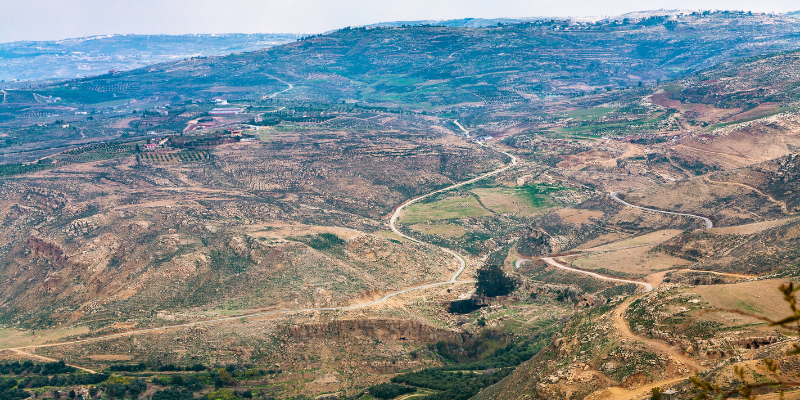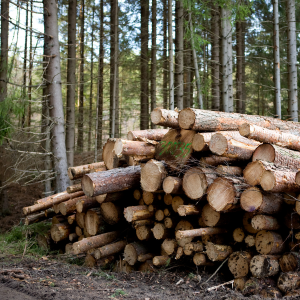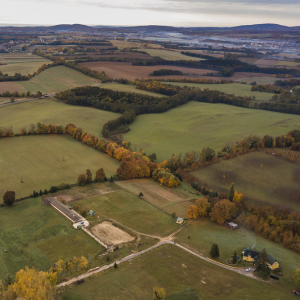
Understanding Land Zoning Laws and Regulations
Knowing how to leverage unbuildable land in real estate requires understanding zoning laws and policies. These laws determine the potential uses for a parcel of land and impose certain constraints that, right or wrong, influence its market value.
For property that cannot be built upon, restrictions may involve servicing gaps like utilities and infrastructure or environmental protections over wetlands and floodplains. For investment purposes, sellers and buyers must know the local zoning laws to capitalize on changes due to variances and changes in zoning that would increase the property’s value.
Interacting with the planning departments will reveal possible zoning changes that may expand the use cases for a particular piece of real estate. This becomes helpful in guiding sellers towards strategic approaches like conservation easements and recreational leasing, which are zoning-compliant, but appeal to buyers anticipating more adaptable uses.
Knowledge of laws deals with compliance, which, in this case, helps them actively sell their land because they know how best to position it legally alongside geography based on the marketplace, which helps them market well.
Evaluating the Market Value of Non-buildable Land
When evaluating the market value of non-buildable land, it’s crucial to consider several unique factors that differentiate these parcels from buildable lots. The first step is to analyze the location and access points of the land, as proximity to desirable areas can enhance its appeal despite development restrictions.
Zoning laws and a property’s possible future zoning changes greatly affect value. Land’s physical attributes concerning nature that provide recreational or conservation activities can bring particular buyers or investors interested in those characteristics.
Researching sales of other properties within the region is very important, especially when dealing with unbuildable lots. There aren’t many transactions of this nature, which makes finding comparables difficult. Real estate activities in neighboring places could raise demand indirectly by creating interest in investment in agriculture, timber, or ecological preservation.
Input collaborations with local specialists. For instance, real estate brokers who understand undevelopable land areas, along with niche market appraisers, can help form pricing and marketing strategies that optimize value for these unique properties.
Creative Strategies for Selling Land with Restrictions
When selling unbuildable land is challenging, creativity becomes your most valuable asset. In trying to sell unbuildable land, creativity comes in handy in the form of constrained parcels. Understanding their specific characteristics and possible applications may reveal some ways of realizing value, allowing for achieving some value out of the land.
Selling a piece of land for conservation, recreational, or farming purposes is also possible; selling plots can be marketed as. Focusing on the ecological advantages could attract more environmentally aware buyers, marketing the land as primary locations for conservation areas or wildlife refuges.
In addition, certain trimodal solar farms could provide consistent profit through lease contracts. Partnerships with local governing bodies and non-profit organizations to develop community gardens and parks add social value, which enhances all properties in the vicinity.
Considerable marketing efforts should be directed toward promoting different views, water access, urban proximity, and other features that make alternative land uses feasible. Creativity drives investment; therefore, marketing should focus on imaginative approaches to capturing investors’ attention by demonstrating innovation and flexible thinking regarding land utilization. Contact us for help crafting an effective marketing strategy.
Identifying Potential Buyers for Unbuildable Properties
Recognizing who to sell unexplained parcels of land to is vital for maximizing profits. Unexplained parcels of land may attract investors more than your average home developer because there is a low supply of such areas, and demand for them keeps increasing.
Long-term land appreciation investors stand to gain a lot from these properties, as they prove very resourceful. Environmental organizations that buy them up to prevent overdevelopment in those areas also do. Neighboring property owners looking to expand their estate often seek unused space to develop on, too. Even local councils may want to buy it for parks or community spaces.
Marketing strategies should highlight the land’s unique features, such as its proximity to recreational areas or role as a natural buffer zone. Understanding zoning regulations and possible future changes can also attract buyers who see potential beyond current limitations.
By targeting these groups and emphasizing the distinct advantages of unbuildable land, sellers can effectively tap into a specialized market willing to invest in unconventional real estate opportunities.
Marketing Techniques for Unconventional Land Sales
Marketing unbuildable land requires innovative strategies emphasizing its unique potential and appealing to niche markets. Highlighting the property’s distinctive features, such as its location near natural attractions or potential for recreational use, can attract buyers interested in outdoor activities.
Leveraging online platforms with high-quality visuals and engaging descriptions can capture the imagination of prospective buyers. Collaborating with local real estate professionals who understand the intricacies of selling unconventional properties can expand your reach and tap into their existing networks.
Utilizing targeted social media campaigns can engage specific audiences who may value the land for purposes like conservation, agriculture, or private retreats. Offering seller financing options might also attract buyers looking at untraditional investments.
By focusing on these tailored marketing techniques, sellers can effectively communicate the hidden value of unbuildable land to potential investors or enthusiasts seeking unique real estate opportunities. We Buy Land Quick can guide you through this process to ensure your marketing strategy highlights the land’s potential.
Legal Considerations When Selling Restricted Land
When selling unbuildable land, navigating the legal landscape carefully is crucial to maximize value and ensure a smooth transaction. Understanding zoning laws and restrictions is fundamental, as these dictate the permissible uses of the land and can significantly impact its marketability.
Sellers should obtain a comprehensive title search to identify easements, liens, or encumbrances that might affect the property’s sale. They should also verify whether there are any environmental regulations or protected areas that could further limit potential uses.
Engaging with a real estate attorney who specializes in restricted land can provide valuable insights into local ordinances and help negotiate terms that reflect the property’s limitations while still attracting buyers. Disclosure requirements must be met meticulously to avoid future legal disputes; sellers must be transparent about any known restrictions affecting the property.
By proactively addressing these legal considerations, sellers can enhance buyer confidence and facilitate a successful transaction even with unbuildable land.
Benefits of Investing in Non-Buildable Real Estate

Investing in non-buildable real estate presents unique opportunities that traditional investors often overlook. These parcels, typically deemed unsuitable for development due to zoning restrictions, environmental concerns, or topographical challenges, can be acquired at a lower cost than buildable land.
This affordability opens up the potential for substantial returns through strategic selling or leasing. Savvy investors can capitalize on these properties by marketing them for recreational uses such as camping, hunting, or conservation efforts, which attract niche buyers seeking outdoor experiences.
Additionally, holding onto non-buildable land can lead to long-term appreciation if local regulations change or the surrounding area develops further. Furthermore, these investments often come with lower property taxes and reduced competition in the market.
The inherent scarcity of non-buildable plots adds another layer of value, making them attractive assets for those looking to expand their portfolio with less conventional real estate investments.
Enhancing Curb Appeal for Undeveloped Properties
Enhancing curb appeal for undeveloped properties can significantly impact the perceived value of unbuildable land in real estate. While these parcels may not be suitable for traditional construction, strategic landscaping and clean-up efforts can make a substantial difference.
Start by clearing debris and maintaining natural vegetation to create a tidy appearance. Introducing native plants or wildflowers beautifies the area and highlights the property’s natural features.
Installing attractive signage with detailed information about potential uses can pique interest among prospective buyers, emphasizing opportunities such as recreational use, conservation projects, or artistic ventures. Additionally, ensuring easy access by improving pathways or driveways can make the property more inviting and accessible for viewings.
By focusing on these visual enhancements, sellers can effectively showcase the unique potential of unbuildable land, attracting diverse buyers seeking distinctive real estate opportunities.
Environmental Impact and Conservation Opportunities on Non-buildable Lands
Non-buildable lands present unique opportunities for maximizing value through environmental impact and conservation strategies. These parcels, often deemed unsuitable for traditional development due to zoning restrictions, topographical challenges, or environmental protections, can serve as vital resources in ecological preservation and biodiversity enhancement.
Property owners can safeguard natural ecosystems by transforming non-buildable land into conservation easements or protected wildlife habitats and benefit from tax incentives and grants dedicated to land conservation. Additionally, such lands can be leveraged for carbon offset projects or renewable energy initiatives like solar farms, enhancing their utility and financial return.
Collaborating with environmental organizations to restore native flora and fauna further elevates the ecological significance of these areas while fostering community goodwill and sustainability awareness. Through strategic partnerships and innovative stewardship practices, non-buildable lands hold immense potential for contributing positively to the environment while offering economic benefits to their owners.
How to Use Drone Technology in Real Estate Marketing
Utilizing drone technology in real estate marketing can significantly enhance your ability to showcase unbuildable land, highlighting its unique features and potential value. Drones offer high-resolution aerial photography and video capabilities, allowing you to capture expansive views of the property’s landscape that traditional ground-level photography cannot achieve.
This bird’s-eye perspective helps potential investor land buyers in Fort Worth and surrounding cities in Texas visualize the land’s layout and surrounding environment, emphasizing its natural beauty and location advantages. By creating dynamic video tours with drones, you can provide an immersive experience that engages prospective buyers online, making your property stand out in a crowded market.
Furthermore, incorporating drone footage into virtual tours or promotional materials adds a modern touch to your marketing strategy, appealing to tech-savvy investors looking for innovative real estate solutions. With these tools, you can effectively communicate the intrinsic value of unbuildable land by highlighting proximity to desirable areas, accessibility, and existing features like water bodies or mature trees contributing to its appeal.
Navigating Financing Options for Unique Land Purchases

Understanding and navigating financing options is crucial for maximizing value when dealing with unbuildable land in real estate. Unbuildable land often presents unique challenges that require creative financial strategies to attract potential buyers.
Traditional lenders may hesitate to finance such properties due to their limited use and perceived risk, so sellers might need to explore alternative financing methods like owner financing or lease-to-own agreements. These options can make the purchase more appealing by reducing upfront costs and providing flexible payment terms.
Additionally, partnering with a specialized lender who understands the intricacies of unbuildable land can provide tailored loan packages that align with the property’s unique characteristics. By offering innovative financing solutions, sellers can tap into a broader market of investors willing to take on unconventional projects, ultimately enhancing the property’s attractiveness and marketability.
The Role of Title Insurance in Protecting Land Transactions
Title insurance is crucial in safeguarding land transactions, particularly when dealing with unbuildable land. In real estate, ensuring a property has a clear and marketable title is paramount to protecting buyers and sellers from potential legal issues.
Title insurance provides this protection by covering losses arising from defects or disputes over property ownership that may not be uncovered during the initial title search. When selling unbuildable land, which often comes with unique challenges such as zoning restrictions or environmental concerns, having title insurance can reassure potential cash land buyers in Dallas and other Texas cities about the legitimacy of their investment.
This form of insurance mitigates risks associated with liens, encumbrances, or claims that could otherwise complicate or derail the transaction. By securing title insurance, sellers can enhance the appeal of unbuildable land and potentially maximize its value by providing peace of mind to prospective investors who might be wary of unforeseen legal complications.
Case Studies: Successful Sales of Non-buildable Lots

Selling non-buildable lots in real estate can seem daunting, but several case studies highlight successful strategies that maximize value. One notable example involves a landowner who transformed a seemingly unbuildable lot into a thriving community space by partnering with local organizations to develop a public park.
This approach increased the land’s appeal and attracted interest from local businesses seeking advertising opportunities. Another case involved leveraging the unique environmental features of a wetland property by selling it to conservation groups interested in preserving natural habitats.
By emphasizing the ecological value and potential tax benefits, the seller tapped into a niche market willing to invest in unbuildable land for preservation. Similarly, an owner of a flood-prone area successfully negotiated with municipal authorities to convert the property into essential infrastructure for flood management, thereby securing a profitable sale while contributing to community resilience.
These examples underscore how creativity and strategic partnerships can turn non-buildable plots into valuable assets through innovative utilization and targeted marketing efforts.
How to Sell Unbuildable Land?
Selling unbuildable land in real estate can be challenging, but with the right strategies, you can maximize its value and attract potential buyers. Firstly, it is essential to highlight any unique features or benefits that the unbuildable land may offer, such as scenic views, proximity to recreational areas, or potential for conservation purposes.
Conduct thorough research on local zoning laws and land use regulations to identify possible exceptions or changes that could enhance the land’s appeal. Marketing the property effectively is crucial—utilize online platforms and social media to reach a broader audience of investors interested in niche markets like hunting grounds, camping sites, or agricultural use.
Collaborating with a knowledgeable real estate professional specializing in unconventional properties can provide valuable insights into pricing strategies and target demographics. Additionally, consider offering creative financing options to make the purchase more attractive to potential buyers who might be hesitant due to perceived limitations.
By implementing these tactics, you can increase interest and sell your unbuildable land competitively.
Why Do People Buy Non-buildable Land?
People often purchase non-buildable land for several strategic reasons, despite its limitations in development potential. One primary motivation is recreational use; individuals seek unbuildable land for hiking, camping, or hunting, taking advantage of the natural beauty and tranquility these parcels often offer.
Additionally, non-buildable land can be a long-term investment opportunity due to its lower initial cost than buildable lots. Investors speculate on future zoning changes or infrastructure developments that could increase the land’s value over time.
Another reason includes conservation efforts—buyers interested in preserving natural habitats or contributing to environmental protection may acquire non-buildable land to maintain its ecological integrity. Furthermore, adjacent property owners might purchase such parcels to expand their privacy buffer or ensure no unwanted developments occur nearby.
These diverse motivations underscore why non-buildable land, including opportunities to sell hunting land, remains an attractive asset in the real estate market. It offers unique benefits beyond traditional construction opportunities.
Can You Buy Land and Not Build on It Right Away?
When considering the purchase of real estate, particularly unbuildable land, potential buyers often question whether they can buy land and not build on it immediately. This strategy can be advantageous for investors looking to maximize value over time.
Due to zoning restrictions or environmental factors, unbuildable land might not support immediate development. However, purchasing such land can still offer significant future benefits.
Investors might hold onto the property as a long-term asset, waiting for zoning laws to change or infrastructure improvements that could enhance its buildability. Additionally, unbuildable land can be utilized for alternative purposes such as recreational use, conservation efforts, or leasing for agricultural activities, thereby generating interim revenue streams while awaiting future opportunities.
By understanding local regulations and market trends, investors can employ strategic patience to maximize the potential value of unbuildable land in their real estate portfolio without needing to construct immediately.
Do you need to sell your land? Sell quickly and prefer a hassle-free sale. We Buy Land Quick is here to help. We offer fair cash offers, handle all the details, and make the process seamless. Ready to sell or have questions? Call us at (469) 529-7977 for a no-obligation offer. Get started today!
| REAL ESTATE LAW | ZONING LAWS | REZONING | ZONED | MARKET PRICE | MORTGAGE AGREEMENTS |
| MORTGAGE | HOME LOANS | VACANT LOT | CASH | INFORMATION | LENDER |
| CONTRACT | ACRES | SOIL | LAND VALUATION | LAND VALUES | PROPERTY OWNERSHIP |
| LAWYER | CHARITIES | CHARITY | HOMEBUYERS | MLS | INCOME |
| FORECLOSE | FORECLOSURE | DATA | COSTS | BANK | BANKING |
| APPRAISER | U.S. | AMERICA | TAX DEDUCTION | UTILITIES | NEWS |
| MONEY | PRICING TRENDS | TIMBERLAND | TIMBER | LOAN | FISHING |
| DEED | AUCTIONS | ADVERTISING |
Helpful Texas Blog Articles
- How to Market Land for Sale: Top Tips
- A No-Lawyer Guide to Selling Land
- Guide To Selling A Part Of Your Land in Texas
- Selling Land To Developers In Texas
- Understanding The Vastness Of 100 Acres
- Selling Non-buildable Land In The Real Estate Market
- Can You Build on Your Land? Zoning Rules Explained
- Can You Rent Out Land Instead of Selling It?
- Comprehensive Guide To Evaluating Your Land’s Worth In Texas
- Understanding Closing Costs For Land Purchases In Texas
- How to Find Out the Zoning of My Land in Texas
- How to Sell Hunting Land in Texas
- Real Estate Commissions and Commission on Land Sales in Texas

